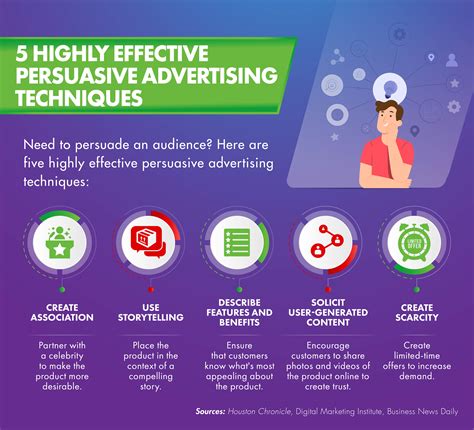In today’s modern world, advertising plays a significant role in shaping consumer behavior and influencing purchasing decisions. The Psychology of Advertising delves into the intricate workings behind consumer decision-making and the techniques used to persuade and influence their choices. From triggering emotions to leveraging cognitive biases, advertising has the power to create desire and drive purchases. Understanding the psychology behind consumer behavior provides valuable insights into the strategies employed to sway consumer choices. However, ethical considerations must also be taken into account when employing persuasive advertising techniques. This blog post will explore the various facets of the psychology of advertising, including the impact of emotions, social proof, scarcity, and brand recognition, to provide a comprehensive understanding of how advertising influences consumer behavior. Join us as we unravel the complexities of consumer psychology and the powerful influence of advertising.
Table of Contents
The Power of Advertising on Consumer Behavior
Advertising has an immense power to influence consumer behavior and purchasing decisions. With the rise of digital marketing and social media, advertisements are now more pervasive and impactful than ever before. Whether it’s a television commercial, a sponsored social media post, or a billboard on the highway, advertising has the ability to shape consumer perceptions, preferences, and ultimately, their actions.
Through strategic branding and messaging, advertisers can create a sense of familiarity with their target audience, making their products or services more appealing. The use of emotionally compelling narratives in advertising can also sway consumers’ decision-making processes, leading them to form strong associations between a brand and positive feelings. In addition, well-crafted advertisements can establish a sense of social validation by showcasing the popularity of a product or service, further influencing consumer behavior.
Furthermore, advertising can tap into cognitive biases and triggers that affect how individuals process information and make decisions. Whether it’s using scarcity tactics to create a sense of urgency, leveraging social proof to demonstrate a product’s desirability, or appealing to consumers’ inherent desires and aspirations, advertising has the potential to shape consumer behavior in significant ways.
Ultimately, the power of advertising on consumer behavior cannot be overstated. It has the ability to shape perceptions, create demand, and drive consumer choices, making it an indispensable tool for businesses looking to establish a strong presence in the marketplace.
Understanding the Psychology behind Consumer Decision-Making
Consumer decision-making is a complex process that involves a variety of psychological factors. Perception, attention, and memory all play a role in shaping how consumers evaluate and make choices about products and services. Understanding these psychological processes can provide valuable insights for marketers and advertisers looking to influence consumer behavior.
One key aspect of consumer decision-making is motivation. Consumers are often motivated by a variety of needs and desires, from basic needs like food and shelter to higher-level needs like self-esteem and belonging. Marketers can tap into these motivations by framing their products and services in ways that appeal to these underlying needs.
Another important concept in consumer decision-making is attitude formation. The attitudes that consumers hold towards a product or brand can significantly impact their purchasing decisions. Marketers can influence these attitudes by carefully crafting brand messaging and positioning to create positive associations with their products.
Decision-making heuristics are also a crucial element in understanding consumer behavior. Consumers often rely on mental shortcuts or rules of thumb to make decisions, especially in situations where they are faced with information overload. Understanding these heuristics can help marketers design more effective advertising and promotional strategies.
Using Persuasion Techniques to Influence Consumer Choices
When it comes to influencing consumer choices, persuasion techniques play a crucial role in shaping consumer behavior. By understanding the psychological factors that drive decision-making, marketers and advertisers can effectively influence the choices that consumers make.
One of the key persuasion techniques is the use of social proof, which leverages the influence of others to shape consumer decisions. Consumers are more likely to make a purchase when they see that others have already done so, as it provides a sense of validation and reassurance.
In addition to social proof, creating a sense of urgency and scarcity can also influence consumer choices. Limited-time offers, exclusive deals, and low stock notifications create a sense of urgency, prompting consumers to make a purchase before the opportunity is lost.
Furthermore, tapping into emotions is another powerful persuasion technique. By creating ads that evoke strong emotions such as happiness, nostalgia, or fear, advertisers can establish a connection with consumers and influence their decision-making process.
How Emotions Impact Advertising Effectiveness
Emotions play a significant role in the effectiveness of advertising. Emotional advertising appeals to consumers’ feelings, making a lasting impact on their memory and decision-making process. When an advertisement evokes strong emotions such as joy, love, fear, or nostalgia, it has the power to create a deep connection with the audience.
Advertisers use emotional storytelling to engage with consumers on a personal level, leading to a stronger brand association. In many cases, emotional ads are more memorable and can leave a lasting impression, influencing consumer behavior and purchase decisions.
Furthermore, emotions can also impact the way consumers perceive a brand. Positive emotions associated with a particular advertisement can transfer onto the brand, influencing consumers’ overall attitude and loyalty towards the product or service being marketed.
Understanding the emotional impact of advertising is essential for marketers to create compelling and resonant campaigns that effectively capture the attention and interest of consumers, ultimately driving brand success and sales.
The Role of Cognitive Biases in Persuasive Advertising
Persuasive advertising relies heavily on cognitive biases to influence consumer behavior. These biases are inherent shortcuts in the human brain that help individuals make decisions quickly, but not always rationally. One of the most common cognitive biases used in advertising is the anchoring bias, where consumers rely heavily on the first piece of information they receive when making a decision. Marketers can use this bias to their advantage by presenting a higher-priced option first, making the subsequent options seem more reasonable in comparison.
Another powerful cognitive bias is the confirmation bias, where individuals seek out information that confirms their existing beliefs and ignore contradictory evidence. In advertising, this can be leveraged by reinforcing the consumer’s beliefs about a product or brand, creating a sense of validation and assurance.
Furthermore, the availability heuristic plays a significant role in advertising by influencing consumer perceptions based on the information readily available to them. Marketers can use this bias to highlight the popularity or scarcity of a product, creating a sense of urgency and desire in the consumer’s mind.
Ultimately, understanding and leveraging cognitive biases can be a powerful tool in creating effective and persuasive advertising campaigns that resonate with consumers on a subconscious level.
Triggering Desire and Creating Want through Advertising
Have you ever wondered how some advertisements make you suddenly feel like you need a product, even if you didn’t know it existed a minute ago? This is the power of triggering desire and creating want through advertising. Advertisers have mastered the art of tapping into our emotions and subconscious desires to make us feel like we can’t live without their product.
By using persuasive language and enticing visuals, advertisers are able to create a sense of urgency and FOMO (fear of missing out) in consumers. This can lead to impulse purchases and a sense of immediate gratification. Whether it’s a limited-time offer or a compelling call to action, advertisers know how to make us feel like we need their product right now.
In addition to creating a sense of urgency, advertisers also tap into our deepest desires and aspirations. By associating their products with our emotional needs and lifestyle aspirations, they make us believe that their product can fulfill a void in our lives. Whether it’s the promise of happiness, success, or acceptance, advertisers know how to make us feel like their product is the key to achieving our dreams.
Ultimately, triggering desire and creating want through advertising is a powerful tool that can shape our perceptions and influence our purchasing decisions. By understanding the psychology behind consumer behavior, advertisers are able to leverage our deepest desires and emotions to make us feel like we can’t live without their products.
The Influence of Social Proof and Social Validation
When it comes to making purchasing decisions, social proof and social validation play a significant role in influencing consumer behavior. Social proof refers to the idea that people will follow the actions of others, assuming that those actions are reflective of the correct behavior. This concept is especially prevalent in the age of social media, where individuals are constantly exposed to the opinions and behaviors of others. Whether it’s through product reviews, testimonials, or social media posts, consumers are heavily influenced by the experiences and actions of their peers.
Furthermore, the idea of social validation adds another layer to the equation. When consumers see that a particular product or service is widely accepted and used by others, it validates their own decision to consider or purchase it. This sense of validation can significantly impact their level of trust in a brand or product, ultimately influencing their purchase decisions.
Marketers and advertisers understand the power of social proof and social validation, and often leverage these concepts in their strategies. By showcasing positive reviews, testimonials, and social media engagement, they aim to create a sense of trust and credibility around their brand or product. Additionally, incorporating elements such as user-generated content and influencer endorsements can further enhance the perception of social proof and validation.
In conclusion, social proof and social validation are powerful tools that can shape consumer behavior and decision-making. As consumers continue to be influenced by the experiences and actions of others, it’s crucial for marketers to understand and harness the impact of these concepts in their advertising and promotional efforts.
Leveraging Scarcity and Urgency to Drive Purchases
Scarcity and urgency are powerful tools that marketers can use to drive purchases and create a sense of urgency in consumers. When a product is scarce or in limited supply, consumers are more likely to feel a sense of urgency to purchase it before it runs out. This can be seen in limited edition products, exclusive releases, or time-limited offers.
By leveraging scarcity, marketers can create a fear of missing out (FOMO) in consumers, making them more inclined to make a purchase. This tactic is often used in e-commerce, where phrases such as only 3 items left or limited stock available are used to create a sense of urgency and drive purchases.
Urgency, on the other hand, involves creating a time-sensitive aspect to a promotion or offer. For example, a flash sale lasting only 24 hours or a countdown timer on a website can create a sense of urgency in consumers, compelling them to make a quick purchasing decision. This is often seen in online retail, where time-limited discounts and promotions are used to encourage immediate action from consumers.
Overall, leveraging scarcity and urgency in marketing and advertising can drive purchases by tapping into consumers’ fear of missing out and their desire for immediate gratification. When used strategically, these techniques can be highly effective in persuading consumers to make a purchase.
The Use of Familiarity and Brand Recognition in Advertising
In the world of advertising, familiarity and brand recognition play a crucial role in influencing consumer behavior. When consumers are familiar with a brand, they are more likely to trust it and choose it over competitors. This is why companies invest heavily in building brand recognition through consistent messaging, visual identity, and marketing efforts.
By repeatedly exposing consumers to their brand, companies create a sense of familiarity and comfort, which can lead to increased sales and customer loyalty. This is why you often see the same brand logos, jingles, and slogans in various advertising channels – the goal is to create a lasting impression in consumers’ minds.
Furthermore, brand recognition can also lead to easier decision-making for consumers. When faced with multiple choices, consumers are more likely to choose a brand they are familiar with, as they perceive it as a safer and more reliable option. This is why building brand recognition is a long-term strategy that pays off in the form of customer trust and repeat purchases.
In conclusion, the use of familiarity and brand recognition in advertising is a powerful tool for influencing consumer choices. By creating a strong visual identity, consistent messaging, and maintaining a presence across multiple advertising channels, companies can build trust, loyalty, and sales among their target audience.
Ethical Considerations in Persuasive Advertising Techniques
Ethical considerations in persuasive advertising techniques are of utmost importance in the present day and age, considering the potential impact on consumer behavior. As marketers continue to employ various tactics to influence consumer choices, it is crucial to maintain ethical standards to build trust and credibility with the target audience.
One ethical consideration is ensuring that advertisements are truthful and transparent. Transparency in advertising involves providing accurate information about the product or service being marketed, thereby allowing consumers to make informed decisions. Misleading or deceptive advertising can not only lead to legal consequences but also damages the reputation of the brand.
Another ethical consideration is the use of emotional manipulation in advertising. While it is common for advertisers to appeal to emotions to create a connection with the audience, there is a fine line between influence and manipulation. Marketers must be mindful of the potential impact of emotional manipulation on vulnerable or susceptible individuals.
Furthermore, targeting vulnerable groups in advertising raises ethical concerns. This includes children, the elderly, or individuals with mental health issues. Advertisers must be cautious in their approach to avoid exploiting these groups for commercial gain, thus emphasizing the importance of ethical considerations in persuasive advertising techniques.





